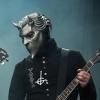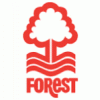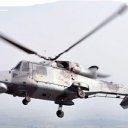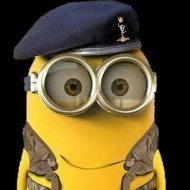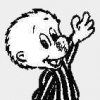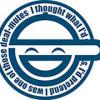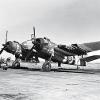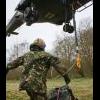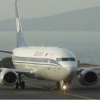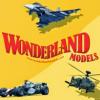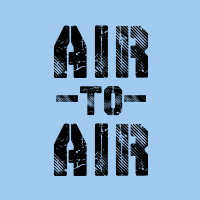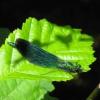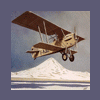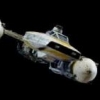Search the Community
Showing results for tags 'ACADEMY'.
-
These are the completed builds from the recently finished P-51 STGB III which I did not complete on time. The original thread is here which has the work in progress. http://www.britmodeller.com/forums/index.php?/topic/235015012-phantomes-triple-172-build-2x-tamiya-p-51d-1x-academy-p-51b/ Quick summary of the three aircraft: 1) P-51D "Jumpin' Jacques" (Tamiya). Built OOB except for Eduard superfabric seatbelts (amazing stuff!). Decals were some spares from a Hasegawa kit. Paints were Mr Metal Color for the NMF and Gunze/Tamiya for everything else. Weathering was done with Flory washes, with Tamiya Smoke for the exhaust stains. 2) P-51D "Detroit Miss" (Tamiya). Same as above except decals from an old Microscale set. 3) P-51B "Bonnie B" (Academy). Same as above except decals from Xtradecals. Color was Gunze H73 as Olive Drab. I was extremely pleased. Gunze totally botched RAF Dark Green (which is what it was supposed to be) and unwittingly created a very nice faded olive drab with just the right amount of green and brown. H73 was also used for the olive drab anti-glare in the other two aircraft. Weathering was done with Humbrol enamel wash. There are a few inaccuracies in the markings, some my fault some from the decals.In particular I was not pleased with Detroit Miss as the markings seem somewhat oversized. Also I think the Bonnie B markings on this set are incorrect (no locomotive kill mark and Bonnie B should be white). I used TallyHo decals for the insignia of the first two planes which ended up being noticeably translucent (and did not conform to panel lines). Terrible stuff. Anyway, were fun builds and reminded me why the Tamiya 1/72 Mustang is my favorite kit in the universe (and the Academy P-51B is nearly as good)
-
Academy is to release a 1/72nd KAI T-50 "snap tite" kit - ref.12519 Sources: http://www.academy.co.kr/1p/1p_plaview.asp?pView=PLA0000001&pCode=1289&pScale=SCALE00003 V.P.
-
Also shown on the flory Models site, so firstly apologies for duplication! This is a flight of fancy, but let's pretend there's no BAe Hawk, and that the RAF still use the classic red/white/grey colour scheme..... Academy kit Xtradecal decals (for BAe Hawk) except serials that came from a Revell Typhoon tamiya paint Flory models 'wash' Just a fun build, never done a 'what if' before, hope it's acceptable! IMG_0108 by bryn robinson, on Flickr P1010799 by bryn robinson, on Flickr P1010801 by bryn robinson, on Flickr P1010802 by bryn robinson, on Flickr P1010804 by bryn robinson, on Flickr P1010806 by bryn robinson, on Flickr P1010807 by bryn robinson, on Flickr
-
This got started several years ago after reading a couple of articles by Tony O'Toole in a modelling mag. There has a lot of work gone into it, including changing the dive flaps and there is a three blade prop bought for it along with resin British bombs for the bomb bay. It has sat not quite finished for a few years. The paint finish is pre my Flow Enhancer revelation but the transfers went on fine. It has taken dive bombing practice at least three times, unfortunately without the benefit of being giving able to pull out at the bottom of the dive, one of which was about 8-10 feet. So there has been a bit of repair work and replacement parts done. Now is the time to finish it and I have an Xtradecal sheet with the correct serials, markings and squadron badge. The first job will be to get the ingrained dust out of the panel lines and the find the box with the rest of the bits in.
-
After more than 10 years of entering AFV's in the competition at Telford, I finally picked up a trophy. This one got the best model of an Allied AFV of WWll from IPMS Czech Republic. It's the Academy Honey M3 with AFV Club's suspension and tracks and MB Modellbau's horseshoe turret. There are also a lot of scratch built items such as the sand shields and the large stowage box over the engine deck. AFV Club's suspension and tracks are superior to Academy's items and fitted to the Academy hull with no problems. I changed the turret for the MB Modellbau one as Academy's hexagonal version is incorrect for this tank. The figures came from various sources and have had their arms and legs repositioned and the heads placed with Hornet items. The stowage is a mixture of Resicast, Value Gear and Accurate Armour. The .303 mg is from RB Models and the decals are curtesy of Bison Decals. A very enjoyable build. Regards, John.
-
As promised, I am in with this GB. After reviewing my options for the build I chose the Academy P-51 Mustang "North Africa" boxing. It looks like a nice kit and this GB gave me the chance to start one. I do plan to start out slow as I still have a number of kits on my desk, including a CG-4A and a Mc.200 for the Mediterranean GB as well as a Tu-95 for the "Smaller than 1/144" GB over on Hyperscale. I have already begun to putter on this kit though, as I did a few steps on the cockpit this evening. Greg in OK
-
This is what I have done this year: I am a huge fan of Kinetic Su-33. It is a brilliant model. It is our of box apart from wingtip pylons, decals and PE cockpit which were required to turn it into a J-15. The pylons are from dream model J-15. I enjoyed it a lot. J-11 is kind of inspired from an old Su-27 picture I've seen with 36 FAB-100. These are FAB-250 though. I think this has been the most expensive model I've ever built with all the aftermarket stuff.. Exhausts, pylons, bombs, nose, cockpit, masks etc.. F-15E demo is kind of a what if since it has the cannon and the wrong seats for the original one but still it was a huge fan with all those 22 rockeyes. All of them are missing some parts but I would say they are 98% complete D
- 1 reply
-
- 4
-

-
- tally of this year
- kinetic
-
(and 1 more)
Tagged with:
-
This is a report of a very personal project I started on about a year ago, and which I recently finished. It is a tribute to my great-uncle, Willem Pieter Adriaan Ditmar, and a gift to his nephew, my father, Eric Willem Roubos. Historical background In the very early morning of 26th of February 1942, Catalina Y-63 was flying over the Banka Strait, north of Sumatra. The PBY had been flying through the night on a recon of the area and its commander, Willem Ditmar, had to decide to turn back to base or continue the patrol and risk an almost certain encounter with Japanese forces. Ditmar chose the latter. The PBY was part of the forces of the MLD (Marine Luchtvaart Dienst) the Air Force of the Royal Dutch East-Indies Navy which had been involved in a struggle with the Japanese for a number of months now, since a Japanese invasion of the Dutch colony was imminent. At 6:40 in the morning, while the plane was flying just under low cloud cover to avoid detection, the PBY was jumped by two groups of three Ki-27 'Nate's' of the JAAFs 12th Air Brigade. A fight ensued, during which the gunners on Y-63 succeeded to shoot down two Ki-27s. However, the numerical superiority of the Japanese proved too much. Co-pilot Noë was hit, the plane went into a dive and was only with great difficulty brought back under control. Severely damaged the plane landed on the water, where Ditmar ordered his crew of 6 into the life boats. Y-63 sinks within seven minutes, raked with bullet holes from continued strafing. The Japanese fighters disappear and Ditmar and his crew, with the injured pilot, manage to reach the Noordelijke Gebroeders Island and eventually, on March 3, Sumatra. From there, with canoes rented from the locals, they reach Anjer on Java on the 6th. To their dismay they learn that the Japanese have landed on Java and control most of Java, including the area they have just arrived at. Ditmar and his men leave the injured pilot with a local official for treatment and continue their journey to Batavia, hoping to avoid the Japanese troops. The remaining six men split into two groups. One group is captured by locals and all three men are murdered. Ditmar's group is spared this fate but is betrayed by locals and handed over to the Japanese. Willem Ditmar was sent to a POW camp in Siam (Thailand) to work on the infamous Burma railroad. He survived the war and rejoined with his wife and his two daughters, who had been detained in Surabaya not knowing for more than three years if Willem was still alive. After the war he became the most decorated Dutch officer in the East-Indies theatre and returned to work for the Royal Dutch Navy and later for the Dutch government in South East Asia in various capacities. He died in Bangkok in a traffic accident in 1982, remaining a legend in our family. This story is based on several post-WWII publications, especially the report by mariner Gerard A. van Schooten, crew member of the Y-63, and on personal communications from family members. The Kit Academy’s PBY-5 has been around for quite some time. I think it’s still a fine kit and the only serious option if you want a PBY-5 (Revell has an antique molding which is out of production). The lines of the PBY-5 are captured well, the fit is generally excellent and the recessed detail is quite good, if a bit soft in places. The fuselage is covered in rivets, but they are quite restrained and look good under a coat of paint. The kit does disappoint when it comes to the finer details, a general issue with Academy kits of this vintage: Interior detail is minimal, the engines are very basic and the propellers are nothing like the real thing. As this was to be a special project I decided to shell out the extra cash on some aftermarket parts to correct these areas. I acquired the QuickBoost replacement engines, props and cowlings, Eduard’s photo-etch (for PBY-5A, but many items are of use) and MiniWorld brass .50 machine guns for the blisters. Construction Yes, it starts with the cockpit! Eduard’s photo-etch really improves this area as it really is quite bland. The cockpit floor requires carving up to make the parts fit and the I substituted the horizontal bar on which the yokes sit by an n-shaped piece of wire that more accurately represents the real thing. There is a gap behind the bulkhead which allows you to see into the void of the fuselage, but nothing can be seen with the cockpit window in place so I left it. The observer position has a few PE parts to spruce up the machine gun supports. After installing the six small side windows I closed up the fuselage. Fit is pretty good with the exception of the area behind the cockpit. I had to use some Mr. Surfacer 500 here and rescribe the lost detail in the area. The wing assembly consists of six pieces which form a middle segment containing the engine nacelles and two outer segments. They go together very well with just a hint of Mr Surfacer 500 required to remove the seams between the segments. I taped off the area to avoid losing the fabric detail while sanding the seams. The nacelles require a bit of filler as well and a few swipes with a sanding stick. The triangular pieces that form part of the float areas on the wing tips were another matter: They left huge gaps with the wing tips and needed quite a bit of filler to get a smooth result. At this point I had to start considering the build sequence. I usually put as much of the model together before I start painting, but the floats and wing supports were rather fragile pieces and I estimated their chance of snapping off at some point during later construction work was 100%. They also got in the way of masking, so I decided to paint the wings and fuselage separately and put them together only after decaling. I drilled some holes for the antennas and aerial wires ( I always forget to do this and end up having to do it after painting – the pine vice will slip and…), then added the PE corrugated ‘shield’ in the nose. After some fettling I pushed it in a it just stuck – no glue required. To the paint shop! Painting First step was to do the preshading. I have only used this technique a few times and I find it a very easy way to add some interest to a model. On a big kit like the Catalina it is a great way to break the large surfaces, so I set to work and an hour later I had a rather patchy and fearsome looking amphibious creature (I know, the PBY-5 is not amphibious…)! On towards the real painting then. All my references on the Catalina indicated that the MLD planes had ‘milky white’ undersurfaces. Unfortunately, this is not a color any brand carries in their range, so I made my own by taking a fresh bottle of Gunze flat white and adding a few drops of yellow to it (my thanks to FlevoDecals for suggesting this). My milky white needed about three thin layers to cover the preshading just enough to shine through (I’m afraid it doesn't show up very well in the photos). This was followed by masking off the white, and it was at this point that my references started to fail me. Although there are many photographs available of MLD PBY-5s, I have been unable to find a picture of my subject, Y-63. This wouldn't be such a problem if the MLD had been consistent in painting its Catalinas, but my references showed they were anything but. Among the differences are the demarcation between white and grey, the color used to overpaint the orange triangles, the color of the prop hubs, the exhausts, the antennas and the painting demarcations on the floats and surrounding areas. Almost no MLD Catalina is exactly the same, and without photographs it is impossible to know which combination of options Y-63 featured. However, it also meant nobody could prove me wrong if I were to guess, so that’s what I did. Undoubtedly someone will sent me a photograph of Y-63 after reading this and prove me wrong on all counts! After making my choices, it was on to painting the upper surfaces. My references told me to use ‘Dark blue-grey’, the MLD description of the color. I hit the internet and the consensus was that Dark Blue-grey was actually identical to the well-known Dark Sea Gray, so that’s what I used. On removing the masking I was unhappy with the demarcations on the fuselage to I spent quite a bit of time remasking and respraying, but the end result was very satisfying. I left the finish slightly patchy to allow for the fact that these planes were used in tough conditions. Next up was masking the overpainted orange triangles on the upper wing surfaces and the orange rudder. I sprayed these with Dark Sea Gray with some black in it (yes, I’m aware this is cheating – I should have used lightened DSG on the whole plane and ‘fresh’ DSG on the triangles…). The little V-shapes on the fabric area of the wing were masked and sprayed yellow. On Revell’s PBY-5 kit these are supplied as decals in red but on a number of my photographs they very clearly have a light color that really contrasts with the dark color of the wing, so I decided on yellow. I think it looks goods, it adds some color to the plane but at the same time blends in pretty well. I polished the surface with a 6000 grit micro mesh cloth, then applied a few light coats of Future on the areas that would receive decals, which are few. Both Dutch Decal and FlevoDecals have sets that include the PBY-5, but FlevoDecals very importantly adds a full set of serial numbers, so it was easy to go beyond the included versions and create Y-63. These are some of the best decals I have worked with; there is virtually no carrier film around them. I only used some MicroSol and they settled beautifully into the panel lines and rivets. The horizontal stabilizers were also painted in this stage. Test fitting had shown they fit very well, and as they are large I decided to leave them off until the end of the build so they would not get in the way. I neglected to attach the cowlings before painting the wing assembly. Silly, as I had to respray the demarcation a few times to get it to line up exactly with the nacelle that is attached to the wing. While I had acquired QuickBoost’s cowlings, I ended up not using them as their diameter is about 2mm smaller than the nacelle! Photographs clearly show they are the same width. I don’t know how an aftermarket part can get it so wrong. I ended up using the kit parts, rescribing the very soft detail on them and they ended up looking perfectly fine. In future I will do a bit more research before buying what is supposedly a ‘direct replacement’ upgrade part… Construction continued With the main assemblies completed I returned to the smaller parts. Still lots to do! The floats required a lot of clean up: The idea is that you insert the thin supports before you glue them together, catching them between the float halves. This I felt was a recipe for disaster, and in addition would make cleaning up the very obvious seam a major pain. However, my solution was far from perfect! I cut off the vertical main support from the floats themselves. This allowed me to clean up the seam on the floats, as well as the sink marks on the supports. So far so good, but it did leave me with a nasty butt joint to attach the two together again. They would break a number of times throughout masking and attaching them to the wing in the days ahead… On studying a movie I found of the PBY-5s in use with the MLD I noticed that they carried not the rather standard single .50 cal in each blister (which I had acquired already) but a dual .303 Browning setup. The .50 cals went in to the spares box. It was an opportunity to reuse some of the PE Eduard had kindly provided to spruce up the kit parts (in combination with plastic card), and I got some Master brass .303 barrels to make the dual setup more convincing. I used a similar combination of Eduard PE, card and Master brass for the front gun. The Eduard PE for the blisters is really meant to represent .50 cals but no one will know. Right? Right. Ok – there is no way around it – you are gonna have to attach that wing to that fuselage! I’ve never been lucky with models that feature spindly supports, and this kit would be no exception. It started off fairly well – the fuselage fits perfectly into the central recess in the wing. Pleased with myself, I forgot to do the obvious (can you guess what it is?) and went on towards the part I dreaded most: The supports. I started on the starboard side. Not a problem – perfect fit! Port side then, and that’s where it all went wrong: Both supports were too short by over 2mm. I slapped myself for not checking alignment after gluing the wing on top of the fuselage. I checked, corrected, checked, corrected, checked, measured, corrected, in the process breaking off all four of the supports again. After finally getting the right alignment I decided that it would be a good idea to let the glue set for a night before continuing. The next day I attached the supports again. Starboard, again, not a problem. Port? Would you believe it? Still a 2mm gap! I checked alignment again, and, satisfied that that was not the problem, proceeded to flood the gap between the supports and wings with a mix of superglue, Mr Surfacer and Tamiya liquid cement. My concoction created a permanent bond (probably the strongest on the entire model!), and after two days of sanding, cleaning, respraying, and more sanding, cleaning and respraying, I was very proud and happy with my now winged Catalina! Final Construction Quite a lot of this really. Main challenge were the cowlings – the use of the resin engine means you can’t use the mating surface on the nacelles as they are too deep and I had to rely on gluing the circumference of the cowlings instead. This, it turned out, was a lousy idea as the weight of the resin engines meant the thin mating surface did not provide enough strength to glue them properly to the nacelles. I decided to create a new mating surface using the back of the resin engine blocks. For this I had to remove the half-circle shaped areas on the nacelles, and by building up the layers using thin plastic sheet I finally got a nice, big, smooth mating surface. All my efforts had resulted in some spilled glue so some more respraying was required. A final piece of aftermarket I used were Red Roo’s fishtail exhausts. These are cast in resin and look quite good, although they are not as crisp as some Czech items of this kind. I had to sand the attachment points quite a bit to get a good fit to the engine nacelle. The fishtails are a bit of conjecture from my side again; I know from photos that some MLD PBYs had them, and they make the plane look a bit different, so there we go. Other bits and bobs went on quite easily; stabilizers, antennas, wires, machine guns, blisters, turret, fuel ejection pipes. I sprayed the entire kit with a mixture of 80/20 Vallejo matt and Future, and removed the Montex masking (great item, no-brainer on a kit like this) on the clear parts. The final items on the to do list were the PE wind shield wipers (attached with Future) and some Little Cars lights to represent the landing lights. They were taped over with clear cellotape to represent the glass. After some touch up I had a completed PBY! Conclusion Academy’s PBY-5 is still an excellent kit. With a bit of aftermarket it can be turned into a great kit, and it really has no significant vices to speak of. I really enjoyed this build from start to finish. After a long car and boat journey from Norfolk to The Netherlands, the revived Y-63 made it to my parents' house where it currently has a place of honor in the living room. I'm very happy with the result and so is my dad! References Bosscher, P.M. (1990) De koninklijke mariene in de tweede wereldoorlog. Part 3. Van Wijnen, Franeker, 490 pp. Geneste, W.J. J. (1992) MLD-er met twee bronzen kruizen. Mars et Historia 26(3): 57-61 Meijer, H. (2008) Voor dapperheid onderscheiden. Nieuwsbrief Vrienden Legermuseum 16(1): 12-13 Postma, T, Visser, G., Van Schooten, G.A. (????) De Catalina Y 63 door de Jappen neergeschoten. http://www.visser-maritiem.nl/Catalina%20Y%2063%20%20(1).html Womack, T. (2006) The Dutch naval air force against Japan: the defense of the Netherlands East Indies, 1941-1942. McFarland & Company, Jefferson, NC, 207 pp.
- 32 replies
-
- 27
-

-
Hi everybody, Me and Juan (JFVicente) decided to try a parallel build this time. A few months ago, Juan asked me to sell him decals and masks for "Blue 57" from Begemot decal sheet. I said to him he will get them for free (whole Flanker Family 2 sheet) if we do two Flankers together. Then he promised a pair of aftermarket Alamo missiles, and in return I will send him my Archers, as Eduard gives too much for single plane in one box. So, I took another Ukrainian Flanker, from Eduard re-edition of Academy, and here we are. Each of us will complete different Ukrainian single seater. I will go for "Blue 56" and it will be built in Karlovac, Croatia. http://www.airliners.net/photo/Ukraine---Air/Sukhoi-Su-27S/0607109/L/ While Juan will make "Blue 57" in Madrid, Spain. http://www.airliners.net/photo/Ukraine---Air/Sukhoi-Su-27S/2250983/L/ We decided to start it now - this project was postponed due to our commitment on 1:72 scale projects: Juan with his superior Hasegawa Su-33 and me with my Italeri Su-34. So, we both have some "Flanker experience" in the past. We would also like you support us all the way, as it's first parallel build for both of us. Also, Juan usually makes 1:72 scale planes only, while I have already one unfinished Flanker in 1:48, started many, many years ago. So we expect a lot of motivation and hugs from you. No kissy, kissy this time. To preserve our "momentum" in this joint project we decided to open one topic for both planes. You will have everything on single place, regardless of update frequency. It could be that one of us goes faster or slower, or we will have different approach, but the goal is the same. In the next posts each of us will present his model with all the goodies we have collected. Juan, I wish you the best modeling time during next few months. Stay tuned, Tomislav
- 55 replies
-
- 2
-

-
- Academy
- aftermarket
-
(and 5 more)
Tagged with:
-
Hi all, I was wondering what the interior colours of Corsairs used by the brits, Is it the British colour or were they left in the American colours (If it is the American colours it would be greatly appreciated if I could get the paint colours) Also what are the colours for Fleet Air Arm in the Pacific? Thanks in advance, Cam
-
Hughes AH-64D Apache Block II 1:72 Academy The AH-64 Apache was developed from the US Army's Advanced Attack Helicopter programme in the early 1970s. This stemmed from The US Army need to fill its anti armour role, following the cancellation of the AH-65 Cheyenne programme. This was designed to find the replacement for the AH-1 Cobra. Hughes Helicopters developed their Model 77 which became the YAH-64. The YAH-64 first flew in 1977. It features a nose mounted sensor suite containing targeting sensors and night vision equipment. A 30mm chain gun was carried under the forward fuselage and stub wing pylons provided four hard points for carrying AGM-114 Hellfire missiles and unguided rocket pods. The helicopter was introduced into US Army service in 1986. The AH-64D or Longbow Apache identified by the Longbow radar system carried on the mast head entered service in 1996. This was produced now by Boeing as they had acquired McDonnell Douglas, who themselves had acquired Hughes. The US Army is the primary user of the AH-64. The primary identifying feature of the D model or The "longbow" Apache is the AN/APG-78 Longbow millimetre-wave fire control radar located above the main rotor head. This allows the simultaneous tracking of upto 128 targets with the ability to engage 16 of these at one time. This data can also be shared to ground units by means of a radio modem. The Block II airframes were first delivered from early 2003 and featured a digital communications upgrade. The Kit Academy have brought us Apache kits in the past, and these have been very good, in fact some would say the best in 1/72 scale. The new AH-64D kit is a new tool kit, this is not as some manufactures would be tempted to do and that is stick a AH-64D radome into an AH-64A kit. There is a choice of early or late sensors and access panels, along with the correct instrument panels and MFD's. A great touch is the one part main rotor in the kit so you wont have the often problematic job of aligning the rotor blades to a main hub and stopping them from drooping down! The kit also features fine engraved panel lines, great detail throughout and slide moulded engine pods which are basically one piece. Construction starts with the main fuselage halves. Holes must be opened up for various parts to attach later on in the build. Once this is done construction can move onto the cockpit. Control columns are added to both cockpits, along with the main display panels. There appears to be a cyclic control only and no collective. The one part moulded seats can then be added. Coamings are then added to the front and rear panels. The next step is to make up the mount for the main rotor blades. Once this is done the completed cockpit assembly and rotor mount can be added into the fuselage and the halves closed up. Next on the list of jobs is to make up the wings for mounting the weapons systems. Once made up these are attached to the main fuselage along with the top cover for the engine area. A five part assembly each side is required each side for the front landing gear. Once made up these too can be added to the main fuselage. The next major step is to attach the fairings down both sides an underneath which house a lot of the electronics carried as well as the feed system for the 30mm canon. Once the underside part is on the 30mm canon itself can be added. The tail wheel is also added at this point. Rocket pods and/or hellfire missiles can be added to the weapons pylons next (though I suspect these will be left to last by most modellers). Next up are the engine pods. The engine fronts and heat shielding exhaust parts are added and then pods can be attached to the main fuselage. Following this the main sensor package can be assembled and attached to the front of the helo. Now that the man parts of the helo have been assembled it is time to add the myriad of aerials, sensors, handles etc that seem to festoon the exterior. The last steps in construction are to add the main and tail rotors. The main rotor is one part while the tail rotor is a more complicated four part affair. The last item to be added is the mast mounted radar system, though check your references as often this was not carried to save weight in a lower threat environment. Canopy The canopy is a one part one which is a shame you cant open it up and show of the cockpit more. It is clear and distortion free. Decals Markings on these helicopters tend to be sparse so Academy have managed to get six options onto the sheet. A full suite of stencils and weapons markings is also provided. Decals are by Cartograf and should pose no problems. 07-7029 "Archangels" Camp Humpreys South Korea, 2010. 07-7031 "Slayers" Camp Humpreys South Korea, 2010. 99-5188 "Vipers" Iraq 2003 (Shark mouth). 99-5102 "Vipers" Iraq 2003 (Shark mouth). 02-5289 "Avenger" Iraq 2003. 01-5241 "Sidewinders" Iraq 2003. Conclusion This is thoroughly modern tooling of the latest US Army Apache and should make up into a great looking model. Highly recommended. Review sample courtesy of UK Distributors for
-
F-4C Phantom 557th Tactical Fighter Squadron, 12th Tactical Fighter Wing Eduard/Academy 1/48th scale Hot off the bench is Eduard's re boxing of the excellent Academy kit. The kit is completely out of the box and proved to be a thoroughly enjoyable build, with no putty used anywhere! The kit comes with what I think is an SUU-23 gun pod, not shown in the instructions but I decided to use it. I am not sure how accurate this is as I believe the SUU-16 was initially used, perhaps someone can clarify for me? It has been painted mainly with the Mr Paint SEAC colours which were a joy to use. upload gambar
- 33 replies
-
- 59
-

-
Hello gentlemen, I am starting a new project which I had planned a long time ago. I am going to build an IIAF F-4D which took part in the Iranian military intervention during the Dhofar Rebellion. And, as this is a quite unusual subject, I'll give you a brief summary about this conflict. Historical summary of the situation in Oman in the 1970s The year is 1952, the country is the Sultanate of Oman. An armed rebellion, which will last until the late 1970s begins. On the rebel side, radical left armed groups, mainly supported by South Yemen, the USSR, China and other Eastern bloc countries. They fight against the Omani government, which receives help from the United Kingdom, and later, Persia, who was at this time, an important ally of the United-States. The Shah's intervention will take place in the late 70s, with sources claiming the exact date to be around January 1978, and will include more than 4000s troops, including an important air support, consisting of Helicopters (Hueys, Cobras, Kiowas, Chinooks) and aircrafts (F-4s, C-130s). The province of Dhofar (read "Zofar") in the Sultanate of Oman British troops searching for mines in Oman About the Airway in Oman At the beginning of the conflict, Oman's military isn't really advanced, and lacks of airpower. Britain will help them by providing them with Hunters and Strikemasters, which will show useful in anti-guerilla fight, but will later be no match compared to the weapon capacity and range of the F-4s. On the Iranian side, the Shah being a strongly "anti-communist leader" and his nation being in a period of trouble, with leftists groups taking importance in Iran in the late 70s, he sees as crucial to extermine any communist threat in the Middle-East which could propage to his country and thus when he will send his troops in Oman, will he make a very intensive fight to eliminate the menace as quickly as possible. When the Iranian Revolution starts in 1979, the "Red Threat" in Oman will indeed have been wiped out. Mohammad Reza Shah Pahlavi in his military uniform Iran didn't publish a lot of informations about their part in this conflict, the Islamic Government didn't appreciate to telle the "exploits" of the government they overthrew, but here are some things we know: C-130E, F-4D, RF-4C and F-4E models aircrafts took part in the task force, with alternating squadrons, keeping always at least a dozen aircrafts on Omani soil. By the way, a dozen aircrafts might seem like a low number, but it already had a bigger fighting power than the whole omani Strikemaster air fleet combined. My aircraft will be a F-4D with the markings 3-616 For the weapon load they carried it would usually consist of: 23mm SUU-16 canon, extremely useful against low armored targets and cheaper than missiles or bombs 2x AIM-7E-2 missiles as a security measure Mk. 82 Bombs, 12 on high value targets, 6 against lower value targets. About my model kit. I chose Academy's new tool F-4D, which seems quite nice for the moment, crisp details and easy adjustments, I don't think I'll need a lot of putty. It is the ROKAF model because I couldn't find any other versions at my local model store, but since I won't be using its decals, if anyone is looking for a Korean F-4, I'll gladly give them to him! I'll also add some detailing and, of course, the IIAF decals, which are from Hi-Decal, a brand that I highly recommend for anyone interested in exotics paint schemes. I started with the cockpit, using Eduard's PE parts: The main challenge about this kit will be time: I want to finish it before November so I can give it as a present to my aircraft enthusiast and modeler uncle, who lives on the other side of the Atlantic and I thus can't often see. And finally, please excuse me for my English, I guess I did some mistakes, but I am still learning this language, so I can't guarantee a perfect level for the moment. Have a nice day, Daniel
- 24 replies
-
- 11
-

-
So here goes group build number 4 for this year. Had a couple of weeks off since finishing my Hurricane and now itching to get going on this. The kit was a gift from my Dad, found going dirt cheap in a charity shop in Stockbridge in Edinburgh. Still had the Wonderland models price tag on it! The charity shop rummagings of my father are a mixed lot but this one looks a gem, very fine detail on the kit and decals still sealed in a plastic pouch, as opposed to absent completely or faded and yellowed to nothing. It went in the stash to be dealt with at some point, but when I saw this it was just the perfect opportunity. Love the box art. Just the one option for one of Rudels aircraft which is fine, I'm not the greatest luftwaffe fan though I do have a thing for the Stuka. Everything still on the sprue. Lots of tiny fiddly bits and the canopy will be a nightmare to mask for someone like me who takes absolutely no enjoyment in that. However, I have lots of time for the build and I am determined this will not get the best of me so I might even make a half decent job of it. Stranger things have happened.
-
Built for the Great Patriotic War group build here and finished off the other night. OOB build, brush painted with a mix of Humbrol and Revell enamels and finished with a couple of washes to pick out the panels and dirty it up as it is a Russian front bird after all. Had a problem when I left the first wash on for about 24 hours (somehow just managed to completely forget I'd done it) which led to some damage to the decals but I can live with that, I doubt there were many pristine aircraft in that area of operations. The landing light and ariel post went the way of the carpet monster. I'll sort them out later, this has been a lengthy build and I really feel the need to move onto something new. The Academy kit is great, brilliant fit and lovely detail, it was an absolute joy to work with. The pics are not the best, apologies for that, only had my phone to work with. Thanks for looking.
-
Hi everyone! Yesterday I've taken Academy's Bronco box from the stash to build the Vietnam OV-10A and quite quickly came to the conclusion that the kit needs some improvements. Would love to listen to advice/experience of building this bird! First topic - undercarriage. Academy provides very basic undercarriage bays and very.... questionable and fiddly main gear. I was able to collect a number of photos of both bays and chassis, but couple of question remain unclear. #1. As far as I get it, the area in front of the cockpit was actually empty and was used to accommodate nose wheel, front taxiing lamp and some wiring. Such as like this. Is it the best way to just keep it empty, adding just the wiring and a bump for the front lamp? Or I'm missing something? #2. I'm seriously concerned about capability of Academy's plastic sticks representing main gear to keep the whole thing standing upright Moreover these sticks have nothing in common with actual main gear I do not see any metal/resin alternatives - so would be grateful if anybody could advice how to scratchbuild more or less reliable replacements Second topic - dimensional accuracy. From what I was able to learn from WIPs and comparison with photoes - Academy's model is pretty OK - the main area that is completely off is intakes above the propellers. Seems to be an easy fix though. Are the things really that good or I miss something major? Third topic - I've got the CMK's interior set and would love to use the vacformed canopy as I'm afraid of gluing together the fiddly thing from Academy. Does anybody have any experience of using CMK's canopy? Does it fit well or not really? Would be grateful for any advise before I start cutting it out. Dennis P.S. Almost forgot - where could I put enough weight to keep it standing on the wheels??? Nose bay seems to be unavailable for that
-
There are some great new plastic model kits due for release in late-September/early-October from Academy and Roden, including the World War I era 1/72 British Vauxhall D-Type Staff Car.
-
- new releases
- academy
- (and 8 more)
-
Original artwork by Lou Drendel. http://www.aviation-art.net/ TABLE OF CONTENTS [1] INTRODUCTION
-
New Academy Model Kits Available Now! For full details, please see our newsletter.
-
- new releases
- academy
- (and 8 more)
-
Dear All Looking for subjects to try out my new AK extreme metal paints I decided to have a go at this F-86E from Academy. I added the CMK resin cockpit. The markings show one of the aircraft used by Colonel Gabreski of the 51st FIW at Suwon Korea. My normal background is not too suitable for Korea, sorry about that! The AK metal paints are the best I have ever used. You may notice on some photos the rivets I added to the airframe. I did not pop them out with a wash as of course the original aircraft was carefully flush rivetted. Hope you like it? Andrew
- 12 replies
-
- 24
-

-
Hi all, I acquired recently one specimen of these. It seems to be a reasonably good kit, with lots of potencial for conversion, but I also read some bad things about it although not indicating the potencial problems. Is there anybody out there with informed opinions on the subject? Thanks, Carlos
-
hello fellow artists. I leave you here a model i made last year. It is academy's F-4J phantom which comes with jolly rogers decals. but i decided to build it to resemble the tomcatters scheme. With decals from the original kit and the ones from superscale decals, which i was lucky enough to find them on ebay. Also resin upgrades to the intakes, wheels and tires, tailhook, and exhaust pipes. minor scratch into the wheel wells, and finally painted PE for the cockpit. now, to the pictures. regards from Mexico!
- 34 replies
-
- 51
-

-
- phantom F-4
- tomcatters
-
(and 2 more)
Tagged with:
-
Hello All, Here's my Academy Mustang, build thread here. It's a really nice kit, which I throughly recommend. There are a couple of accuracy issues, the decals are non-cooperative and the colour scheme has a couple of errors, but nothing you can't easily fix or ignore! And finally, with the old, old Airfix Mustang, which was the first kit I ever built: This Airfix one was a nostalgia build. I remember being dismayed the first time around that green water colour wouldn't stick to the wings! Thanks for looking, Adrian
- 10 replies
-
- 31
-

-
So, this is my first planned diorama, and the first diorama I've attempted (actually, that's not true, I bashed one together out of balsa wood a long time ago ). But it will be the first diorama since I started putting more effort into my modelling. So far I only have the rough plan of it, and what will decorate it. Its one of at least three dioramas I have planned for this particular setting, which is a fictional conflict between China and Japan. This one will be set on a Tokyo street and features a Humvee crew meeting with a small group of JGSDF soldiers. Over the years I've picked up a number of JGSDF figures, some from the Iraq Humanitarian Assistance set and others the Type 90 w/ loading crew (which I'll probably put with my Abrams). Only painted up the two shown here so far (that camo is tedious, maybe more so than ACU). The additional decoration for this idea came from the Meng barriers set. The k-rails in the set I've painted up and will likely use with my Bradley idea. I also planned to get two other Meng sets, one being the highway set (possibly for the Abrams) and the other the vending machine (for the Bradley). The Bradley (an M2A3 BUSK), which I've started building, will also be in NATO three-tone. So without further ado, here's a basic look at what my idea could look like Gaz
-
Built for the Hunter Group Build, you can see more here: http://www.britmodeller.com/forums/index.php?/topic/235002161-hunter-fr10-academy-148-plus-pj-conversion/ http://Untitled by bryn robinson, on Flickr
- 12 replies
-
- 21
-


